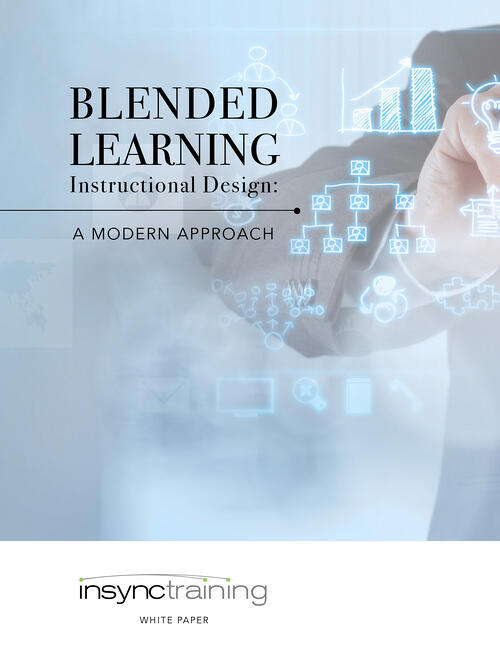Virtual Learning is Real Learning-5 Activities for Your Programs
Virtual training continues to be a top priority for organizations, but the reality is the virtual experience isn’t living up to our standards for...
3 min read
 Jennifer Hofmann
:
Mar 13, 2024 1:20:00 PM
Jennifer Hofmann
:
Mar 13, 2024 1:20:00 PM

Hybrid work is here to stay. Now more than ever, it’s critical for organizations to address the unique challenges it presents. Just look at the latest statistics:
Many employees (and most corporate leaders) agree that the most successful organizations will be the ones that can implement hybrid work effectively to help preserve corporate culture and promote collaboration. What is the solution to achieve implementation? Robust workforce training tailored for the hybrid environment.
More and more companies are operating in a hybrid work environment and struggling with its many challenges. For example, one Fortune 100 organization contracted InSync to help with its initiative to integrate global associates from multiple sites into cohesive learning cohorts. Representatives from California, New York, and Toronto, or Bangalore, Sydney, and Shanghai, would form learning cohorts while remaining in their respective cities.
InSync helped by effectively managing the transition to a virtual training model, overcoming the hurdles presented by having employees in multiple remote locations. InSync then managed the ongoing program, enabling the company to unlock the significant potential in their associates while ensuring valuable business outcomes.
InSync Training's latest research, spearheaded by Director of Research Dr. Charles Dye, shows how well-designed hybrid training like this can improve efficiency and build company culture in hybrid environments. The study, “How to Engage Learners and Produce Real Outcomes,” provides evidence and strategies for organizations navigating the complexities of modern hybrid workplaces.
Central to the research findings is the profound impact of well-designed hybrid training on both work practices and organizational culture. Key insights explore
Additional findings of the research emphasize that
This research builds on Dr. Dye’s earlier research and development of the innovative cognitive model of learner engagement which has since been operationalized as the InQuire Engagement Framework™. This model pinpoints emotional, intellectual, and environmental responses as key to maintaining learner engagement and reducing the financial and cultural costs of attrition. If done correctly, hybrid training models work just as well if not better than in-person models.
Implementing hybrid training allows organizations to cater to the diverse learning needs of their workforce, providing a more personalized and engaging learning experience. Hybrid training enables organizations to scale their training programs more effectively, reaching a wider audience while reducing costs associated with travel and accommodation. Additionally, it promotes a culture of continuous learning and development, empowering employees to take ownership of their professional growth. By embracing hybrid training, organizations can enhance employee performance, increase retention, and stay competitive in a rapidly evolving business landscape.
To begin to apply this research in your own organization, consider designing training with hybrid learners in mind. Steps include the following:
When we learn in a hybrid environment, we learn how to work in a hybrid environment. In addition to the expected outcomes of any instructional program (specific learning objectives such as new knowledge or development of a new skill), the data suggest that learners in successful hybrid instructional experiences emerge with some insights that can positively influence hybrid work at an organization. Hybrid learners tend to promote and adopt the same techniques and approaches in their own work, and they learn that these tools can offer an effective tool in conveying culture and building interpersonal relationships for hybrid and remote workers with their in-office colleagues.
 To download the full research report and eBook, visit https://www.insynctraining.com/hybrid-research.
To download the full research report and eBook, visit https://www.insynctraining.com/hybrid-research.
We’ll examine the research and corresponding applications for employees and organizations on our upcoming webinar “Learner Engagement in the Hybrid Workplace” on March 28, 2024.

Virtual training continues to be a top priority for organizations, but the reality is the virtual experience isn’t living up to our standards for...

As instructional designers we are constantly being bombarded with new technologies and new trends. It's difficult to distinguish which are fads, and...

Working in any learning and development role is rewarding and exciting, especially when you continue to grow. Learning professionals are focused on...